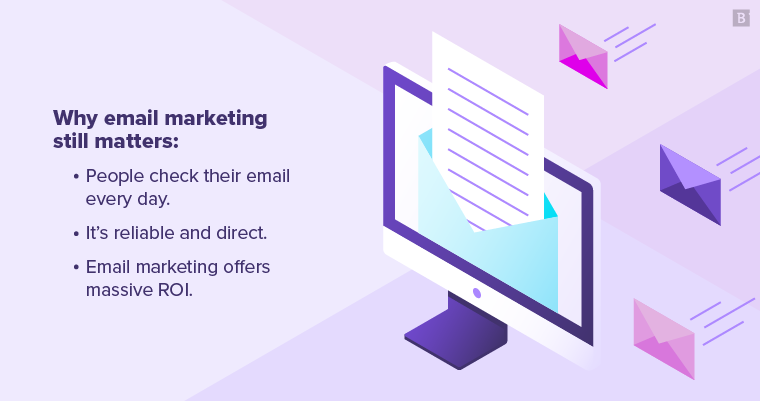Good marketing produces meaningful results. That may seem a bit obvious, but when you get right down to it, your marketing strategies either work, or they don’t.
You should be able to measure the business impact of your marketing strategies in a way that goes beyond baseline metrics like impressions, organic traffic and click-through rates (all good indicators of engagement, by the way, but not necessarily compelling enough on their own to impress business leaders and decision-makers).
After all, you could have the No. 1 SERP ranking on your most highly coveted keyword, and it wouldn’t mean a thing if it didn’t translate into more sales opportunities and actual business revenue.
Drawing a straight line from your marketing efforts to revenue streams may not be the easiest path to chart, but there’s one benchmark that never fails to accurately reflect the performance of your marketing program: lead generation.
Lead generation is one of many overarching inbound marketing goals to prioritize. For B2B organizations with long sales cycles, in particular, lead generation is an essential part of the customer journey, filling up the sales funnel with viable prospects who are ready to make a purchase.
We’ve compiled a list of can’t-miss B2B lead generation tactics to help you keep those prospects flowing and give sales teams more opportunities to close a deal.
Let’s get to it.
1. Get active on social media
B2B marketers who think social media is exclusively for B2C companies are doing themselves a disservice. Social media marketing is an especially useful B2B lead generation strategy, helping brands build awareness, establish themselves as a leading authority in their industry and directly engage with potential customers.
In an August 2019 survey of global marketers, 59% of respondents listed social media as the most effective way to generate leads. If you think that figure was skewed toward the B2C crowd, consider that nearly half (48%) of those marketers said LinkedIn — the go-to B2B social media network — was the best social media platform for lead gen.
Every B2B company should incorporate social media into their lead generation process, but where should you begin? Here’s how to adjust your social media strategy to start generating B2B leads, including this 3-step plan:
- Get involved with a large, active LinkedIn group in your industry and start contributing and making connections. It is a networking site, after all.
- Promote new product launches, company updates, content releases and anything else you want to get the word out about. It goes without saying to not overdo it. First and foremost, you should aim to facilitate conversations rather than seem like you’re constantly trying to sell a product or service.
- Keep a close eye on your social media feeds so you can promptly respond to any message or mention your brand gets. Social media monitoring software is a lifesaver in that regard, notifying you whenever a user tags you in a post or sends you a message.
Social media also affords more opportunities to interact with potential customers and sales leads more directly. Both B2C and B2B brands can learn a lot about their target audiences by engaging users over social media.
Hearing about the most pressing concerns and pain points facing potential customers will help marketers better understand what really drives B2B buyers in their corner of the market, for example:
- What messaging will resonate with them?
- What kinds of services and support do they need?
- What are they looking for from a vendor to meet their long-term goals?
With those insights in hand, B2B brands can then sketch out a different B2B buyer persona for each customer segment. Those personas will help shape marketing strategies as well as provide sales teams more context on the issues that matter most to a qualified lead.
Staying on top of your company’s social media presence will help you build relationships with potential customers, nurture those prospects and ideally convert them into qualified sales leads. So, don’t overlook the importance of social media in your B2B lead generation strategies.
2. Roll out email marketing automation
If you want to make every marketing dollar count, email marketing automation is the way to go. On average, email marketing produces $42 for every $1 spent on it.

Automation tools are a big reason why this particular B2B lead generation strategy is so effective, as B2B marketers can reach hundreds or thousands of potential customers with minimal effort.
Of course, the B2B lead gen benefits of email marketing automation only really come into focus when you put in the time and effort to get the most out of them.
Follow these best practices to get the best results out of your email marketing strategies:
- Segment email lists so you always send the right message to the right audience.
- Personalize emails so every communication resonates with your prospects.
- Give recipients something valuable in every email, whether it’s a promotional offer, downloadable asset or expert advice.
Drip campaigns are a great way to continually engage potential customers while refining your message with every new interaction. You’ll have your lead nurturing bases covered by reaching out to new leads and dynamically changing your message in response to their replies. Pair that with email marketing automation, and watch your lead generation campaign start to deliver as many B2B leads as your sales team can handle.
3. Optimize your PPC campaigns
Pay-per-click (PPC) advertising remains an enticing B2B lead generation channel because of the prominent position those ads hold on SERPs. We’ve discussed in the past the issue of SERP crowding and the shrinking valuable real estate on Google search results. Marketers are under more pressure than ever to land in the top 3 search results or grab the highly coveted featured snippet position for their target keywords.
Let’s be honest, it takes a lot of hard work to create the kind of fully optimized and engaging content that will outrank the competition and deliver that level of SEO success. A lot of B2B marketers would jump at the chance to take a shortcut to the top of their high-priority SERPs, and PPC offers a way to do just that.
The most common type of PPC advertising, paid search ads sit at the top of the SERP, so they are, in many cases, the first thing users see on the page.
Of course, PPC is not without its own concerns. Depending on the amount of competition for a particular keyword, you could be paying quite a bit of money for every click that your ad gets. Search engine users are also more hesitant to click on a paid ad than organic search results that are ostensibly more relevant to their query and more likely to provide the answers they’re looking for.
The average conversion rate for Google Ads is 4.40% on the search network and 0.57% on the display network. While not as high as organic search conversion rates, paired with other B2B lead generation strategies, PPC can supplement your efforts and fill in some of the gaps.
Working remarketing strategies into the mix can help boost the number of qualified leads you get out of PPC advertising as well. Remarketing ads keep your brand top of mind if someone clicks on your PPC ad but doesn’t initially convert. Think of B2B lead generation as an ongoing process – you can’t always expect immediate results from every B2B lead gen strategy.
4. Build out your blogs
If you’re a long-time reader of the Brafton blog, you may have noticed our articles have steadily gotten longer over the years. That’s not a coincidence. Content marketing trends have shifted to favor long-form content, with the ideal length ranging anywhere from 800 words to several thousand words, depending on the topic being covered.
Why is long-form blog content in such high demand right now?
Because longer content provides (or at least it should provide) more depth and insights for the reader to glean. When Google ranks search results, its algorithms are trying to push the web pages that are most likely to be relevant and useful to the searcher to the top of the SERP.
More depth means there’s a better chance your blog will comprehensively answer any question the user might have about a given topic. And that will lead to higher search rankings, get your message in front of a wider audience and bring more visitors to your site. That’s what inbound marketing is all about.
Informative content will help you bring in more organic traffic, but it provides other B2B lead gen benefits as well. Long-form blogs are a chance to flex your industry expertise, dig deep into the latest market trends and offer actionable advice to help readers solve their biggest headaches.
In short, they’re more likely to provide value.
You’re not just building awareness with this type of content; you’re establishing your B2B company as a brand to respect and trust. Establishing that rapport with site visitors will keep them coming back for more insights and, when they’re ready to take the next step toward a purchase decision, they’ll think of you.
That brand trust is what makes this such an effective B2B lead generation tactic. You’re not just collecting a bunch of potential leads — you’re building relationships that will make it easier to convert sales leads into actual customers.
In essence, long-form content bridges the gap between demand generation (building awareness with potential customers) and lead generation (identifying intent-driven sales leads and guiding them closer to a purchasing decision).
Not sure you have time or resources to start cranking out long-form content at a consistent clip? Re-optimizing old blog articles to add more substance and cover a wider array of related topics may be a quicker way to fill your content calendar with informative and comprehensive articles without starting completely from scratch.
5. Wrangle more sales leads with strong CTAs
Capping off a strong piece of content with a clear call to action (CTA) is a great way to generate leads and start the process of separating the qualified leads from prospects who aren’t going to pan out.
A custom CTA adds a visual element to the page that draws in readers and offers additional value for people who want to learn more about a particular topic, read about your products and services or subscribe to your newsletter.
Here’s an example:

CTAs can also be used to promote more in-depth content like a downloadable white paper or eBook, a one on one consultation, a sales demo or a free trial. Such lead magnets encourage potential customers to move further down the marketing funnel while giving B2B marketers the ammunition they need to extend the conversation with those prospects.
CTAs strike a pretty reasonable deal: Your prospective customers get access to exclusive content and expert insights in exchange for an email address or other contact information. If someone is willing to make that trade, there’s a good chance they’ll be receptive to the more promotional communications and personalized interactions involved with lead nurturing campaigns.
CTAs can be repurposed and placed across different digital channels to maximize your ROI and increase B2B lead generation. Blogs, email newsletters and social media posts are all great places to include a relevant CTA.
Generating leads has never been easier
Digital marketers have a tremendous number of tools at their disposal to help boost their B2B lead generation strategies and deliver more qualified leads to sales teams. Although there is no single silver bullet that will solve all of your lead gen needs, combining the different tactics discussed here will help you capture more B2B leads who are ready to sit down and talk about a potential purchase. Take advantage of these B2B lead generation strategies and watch the sales leads start rolling in. Your sales team — and your CEO — will thank you.





